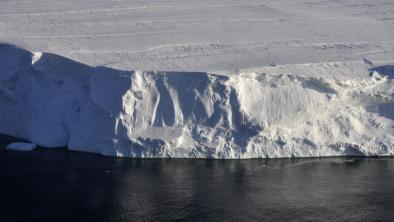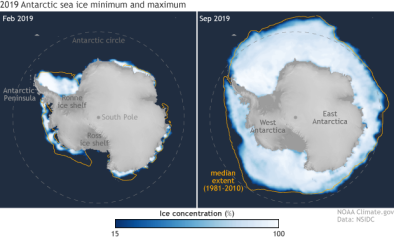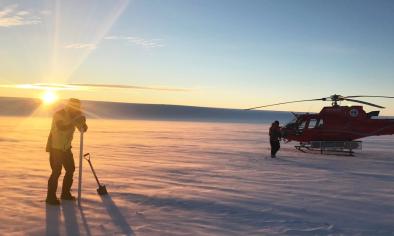Science Source
Widespread movement of meltwater onto and across Antarctic ice shelves
I think most polar scientists have considered water moving across the surface of Antarctica to be extremely rare. But we found a lot of it, over very large areas. We have no reason to think [the extent or number of drainages have increased over the seven decades covered by the study]...But without further work, we can't tell. Now, looking forward, it will be really important to work out how these systems will change in response to warming, and how this will affect the ice sheets.
Jonathan Kingslake, lead author and glaciologist at Columbia University's Lamont-Doherty Earth Observatory
- States that surface meltwater drains across ice sheets, forming melt ponds that can trigger ice-shelf collapse, acceleration of grounded ice flow and increased sea-level rise. Numerical models of the Antarctic Ice Sheet that incorporate meltwater’s impact on ice shelves, but
- States numerical models of the Antarctic Ice Sheet predict a metre of global sea-level rise this century in response to atmospheric warming, but they ignore the movement of water across the ice surface in response to global warming
- Argues that a broad quantification of surface meltwater and its drainage is needed to understand the impact of water moving across the ice surface
- Shows widespread drainage of meltwater across the surface of the ice sheet through surface streams and ponds (hereafter ‘surface drainage’) as far south as 85° S and as high as 1,300 metres above sea level
- States that these findings are based on satellite imagery from 1973 onwards and aerial photography from 1947 onwards
- States that surface drainage has persisted for decades, transporting water up to 120 kilometres from grounded ice onto and across ice shelves, feeding vast melt ponds up to 80 kilometres long
- States that large-scale surface drainage could deliver water to areas of ice shelves vulnerable to collapse, as melt rates increase this century
- Finds that—while Antarctic surface melt ponds are relatively well documented on some ice shelves—ponds often form part of widespread, large-scale surface drainage systems
- Concludes that in a warming climate, enhanced surface drainage could accelerate future ice-mass loss from Antarctic, potentially via positive feedbacks between the extent of exposed rock, melting and thinning of the ice sheet
Related Content
Headline

Jan 29, 2020 | BBC News
Journey to the 'doomsday glacier'
Headline

Nov 22, 2019 | NOAA Climate.gov
Understanding climate: Antarctic sea ice extent
Headline

Mar 26, 2019 | The Guardian
Australian researchers find huge lakes beneath largest east Antarctic glacier
Science Source
| Geophysical Research Letters
Mass Loss of Totten and Moscow University Glaciers, East Antarctica, Using Regionally Optimized GRACE Mascons
Yara Mohajerani, Isabella Velicogna, Eric Rignot


